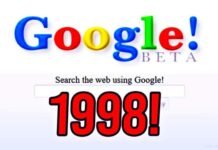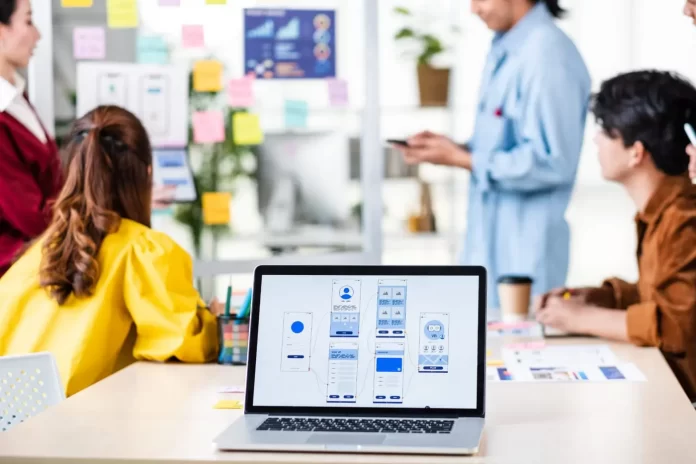Every UX design project is such a mammoth of work that it can look overwhelming. Having a solid design process can alleviate this by helping to create structure, efficiency, and a straightforward course of action.
The design process starts by stating a problem, then conducting research and brainstorming a solution. This is then followed by prototyping and testing the possible solutions until one hits the brief and proves to be the one released on the market. In reality, this process is filled with pitfalls and wrong turns. But, one category of UX teams manages to get the most out of the design process – UX design agencies in San Francisco.
San Francisco is currently considered a Mecca for designers. The Silicon Valley environment resulted in industry leaders that may seem too small to handle big projects. But, SF agencies somehow manage to make UX design better than most other companies globally. Let’s look at the average design process of UX design agencies in San Francisco.
Discovery Phase
A UX company in San Francisco would normally invest time in discovery because it understands just how vital this phase is. After all, this phase will provide the necessary information about the problem to solve, which will, in turn, mean better chances of finding the right solution for the client.
There are two types of discovery: feature and functional discovery and design discovery. Each is conducted independently from the other.
Feature and Functional Discovery
Typically, this type of discovery is performed by UX analytics. This discovery aims to:
- Gather all the requirements for the future product.
- Analyze and assess the current state of the market to uncover all the competitors.
- Establish the technologies that this product can benefit from.
The team that is put in charge of this discovery will do a few essential things:
- Analysis of user’s expectations: In here, they will narrow down who their target user is and, through interviewing them, gain the knowledge needed to create a product that will adequately solve their needs and answer to their wants.
- Define business objectives: A great product and its design answer to what the user needs, but it also needs to be aimed at growing the business the way they want. This is only possible if business objectives are clearly defined.
- Competitive comparison: Understanding your business is only part of the challenge. Understanding your competition and weaknesses and strengths are the other parts. Once you know what your competition lacks, you can foresee adjustments you’ll need to make. Competitor analysis is vital for any thriving business if they want to continue thriving. San Francisco agencies like to present this knowledge and insights to the stakeholders through a chart–they call it ‘competitive comparison’-so they can visually see to which niche their product will belong.
Design Discovery
As you might expect, the design discovery is conducted by designers. This process will try to fully understand the design needs and decisions needed and applicable to this particular product.
The crucial part of this discovery is not to be restricted by limitations. Of course, there will be some due to various variables, but the fewer limitations you find, the better it will be for the creative part of problem-solving.
These two types of discovery are vital for the project. Without doing the proper research, the solution might just be lacking. When both discovery teams finish their procedures, they come together to discuss and establish the game plan.
There are two main things to keep in mind when both teams come together. First, designers should not just follow the instructions from the engineering team. All decisions should come from a mutual agreement, not just accepting one decision because the other side says so. Secondly, from all the information gathered, the team will have a great understanding of the present state of the market. However, they should not be confined to this. The idea is to protect their product and business into what it could be and accomplish in three, five, even ten years.
Ideation phase
“Roadmap” that’s the term most will think of when they think about product design. The truth is the roadmap is not really what most will think. People believe that it is a step by step to avoid mistakes–that’s impossible, and an airtight roadmap would take months, even years to do. But, with the discovery phase, you start to create a path you’ll follow, and in this ideation phase, you will go down to the nitty-gritty to get closer to the ideal roadmap.
Prototyping Phase
The prototyping phase will depend a lot on the specifics of the product and the project at hand. Nonetheless, there are some common ground and rules that most prototyping processes follow:
- It’s called a prototype for a reason: trying to create something high-fidelity and tangible will be a waste of time at the start of the project. Until a solid information architecture is developed, there is no point in aiming for high-fidelity mockups.
- It is not linear: San Francisco agencies do not expect to find the perfect solution immediately–although it might sound like great advertising, it just isn’t realistic. They know the process takes time and won’t be linear progress.
- Consistency is key: although many people are involved in the process, UX agencies understand that consistency is paramount. They ensure to make constant checks by creating interaction scenarios.
- Involve stakeholders: one way to ensure the product is the right solution to the problems started from the beginning is to ensure that many stakeholders are involved. Some teams make the mistake of only asking stakeholders once or twice during the process, but this might be counterproductive and even costly if many changes are made.
- Designers and developers need to work together to ensure that their ideas are feasible.
- Style guides and brand books: San Francisco agencies understand that they need to smooth the design implementation process for their clients. That’s why they provide them with style guides and brand books.
Assessment Phase
They are also known as the testing phase is the closing phase in the process–and a crucial part of it. However good your design team is, they are not their users. This means that even after all the planning and discussions, the only way to prove that the design is successful is to release it into the real world and assess how it performs. Are users engaging correctly? Do they understand what they have to do, or do they end up confused? Etc.
San Francisco UX agencies understand the importance of real-world testing, and they follow two main rules:
- They test early and often. The sooner you realize something is not working, the better. That is why SF agencies try at all project phases and correct any problems.
- They set clear metrics. Knowing what to measure and how to measure it to know if the product is working or not is super important, and they know this. That is why they have clear metrics to analyze...
There are thousands of great UX agencies worldwide, but San Francisco professional UX agencies are some of the best ones because they enter the design process. They make sure they clearly understand the risks and problems that can come ahead and prepare solutions. They work together with their team and client to deliver excellent and successful solutions while providing a fantastic user experience.






























































